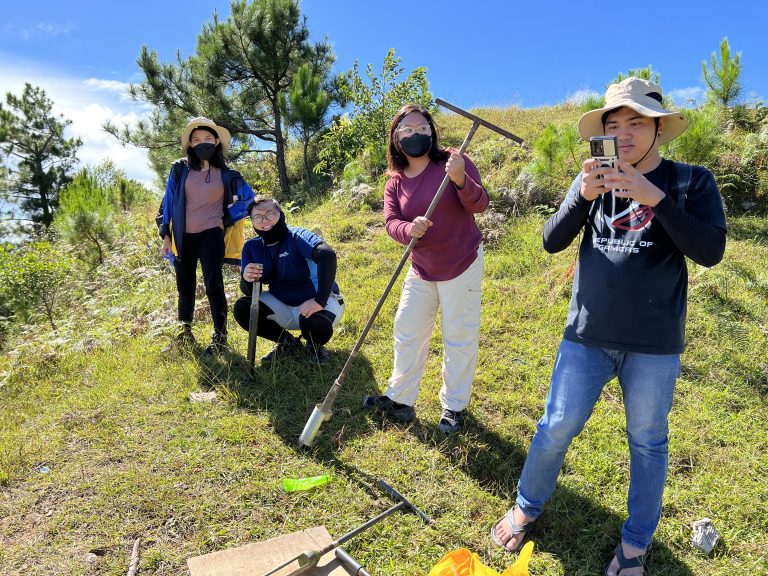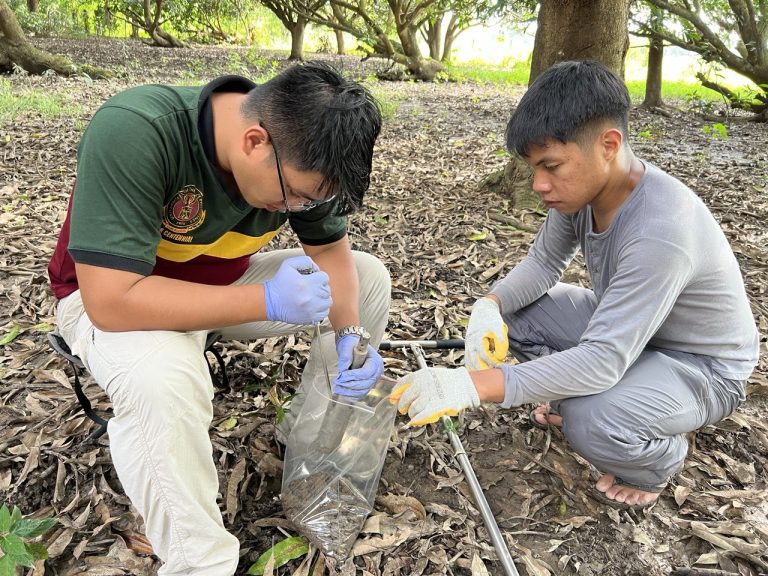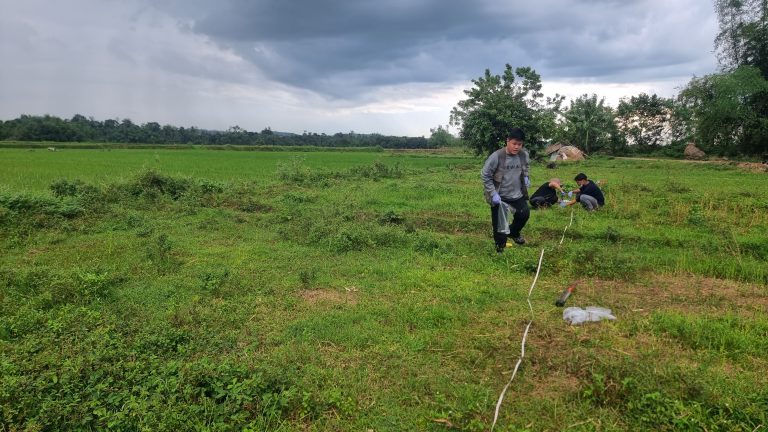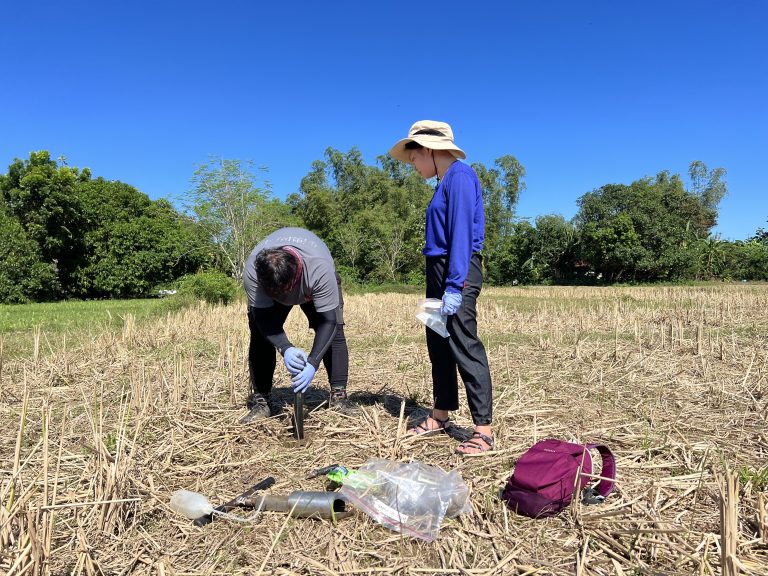





Knowing more about an area’s soil geochemistry provides crucial information for soil suitability for plant species, soil quality, soil health, and ecological evaluation.
The UK-NERC and DOST-PCIEERD research project PAMANA conducted fieldwork last 04-08 November 2022 in the Agno River Catchment in the central Luzon island in the Philippines to collect soil samples for geochemical analysis and characterization. A total of 30 sites were sampled from the provinces of Benguet, Pangasinan, Nueva Ecija, and Tarlac.
With the use of soil augers, a composite sample consisting of 1-2 kilograms of soil collected from 10 points inside a 20×20-meter transect. The soil sampling protocol used primarily adapted the modified United States Geological Society (USGS) soil sampling protocol. The major modifications excluded agricultural lands from the buffers since the majority of the areas within Agno River watershed is dominated by agriculture land use. A 20×20 km grid was laid out in the entire watershed and each of the grid has 1 representative sampling point. At the sampling site, sampling location is adjusted based on the field constraints and area access.
The PAMANA group was split into three (3) teams of four (4) to cover a more efficient sampling design. Each team made courtesy calls to the local government units and barangays (smallest political unit in the Philippines) before conducting the sampling activity. Most of the barangays provided field assistance.
In three (3) sites of the Lingayen estuary in Pangasinan province, and the Baloy Bridge riverbed and Antamok open pit in Benguet, geoslicer sampling activity was done to collect unconsolidated sediment samples. This activity aims to provide additional information on the sedimentation characteristics in the study areas.
All samples were taken back to the UPLB Institute of Renewable Natural Resources Soils Laboratory for homogenization and preparation for chemical analysis. The analysis of the samples will be conducted at the University of Exeter in England.
Looking forward to the results 🙂